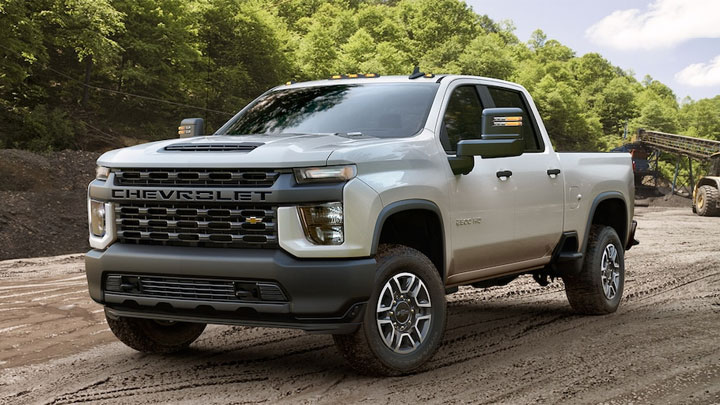
- 2005 2500 CHEVROLET TRANSMISSION FOR 6.0 4X4 FULL
- 2005 2500 CHEVROLET TRANSMISSION FOR 6.0 4X4 SERIES
Both 4.8-liter and 5.3-liter engines share the same block, with the latter featuring a longer stroke, which means parts interchangeability between the two is significant. Starting in 1999 and running until 2007, these motors would offer between 255 and 345 horsepower in stock form, but most importantly they would also be capable of handling significant amounts of turbo or supercharger boost thanks to their iron blocks. These are found in displacements that included 4.8-liters (LR4), 5.3-liters (LM7, L59, LM4), and 6.0-liters (LQ4, LQ9).

2005 2500 CHEVROLET TRANSMISSION FOR 6.0 4X4 SERIES
It would instead be the series of iron-block, aluminum-head LS engines produced under the Vortec brand name for Chevrolet, GMC, Cadillac, and Hummer trucks that would greatly expand the family. It's not a common engine, however, given that it was only available for two years in the Cadillac CTS-V, and four years in the Z06 model Corvette. On the high performance side, the LS6 would refine the LS1's details with a more aggressive camshaft profile, improved intake, higher compression, stronger block, and sodium-filled valves. GM would waste no time in expanding its Gen III architecture to include a variety of applications, displacements, and design differences. Despite offering 346 cubic inches as opposed to the previous standard of 350 (with a 3.89-inch bore and a 3.62-inch stroke), the LS1 continued to be marketed as a 5.7-liter motor. Next up was scrapping a traditional distributor for an electronically-controlled coil-on-plug design, using a composite intake manifold, and introducing cathedral ports on the also-aluminum engine heads.
2005 2500 CHEVROLET TRANSMISSION FOR 6.0 4X4 FULL
One of the biggest changes was the move from an iron block to a full aluminum casting, which dropped the weight of the engine considerably. That being said, there were several key differences introduced by the LS1 as compared to GM V8s that had preceded it. Many things about the LS1 helped maintain its lineage to previous small blocks, including the same general bellhousing pattern (which has had a major impact on the LS being perceived as a 'plug-and-play' replacement motor for older vehicles), its two-valves per cylinder, and its pushrod design. Officially, General Motors refers to this series of motors as the 'Generation III small block,' which identifies it as a successor to the brand's previous pushrod V8s, each of which was based on the original small block design that debuted in 1954. The LS story starts in 1997 when the LS1 engine first appeared in the Chevrolet Corvette (later migrating to the Chevrolet Camaro and Pontiac Firebird). With that in mind, we put together this beginner's guide to the LS family that explains the lineage of each generation of this venerable V8. Within those particular divisions are an entire universe of motors that, while sharing many commonalities, also offer a fair number of differences that can affect what applications they're best suited for, what prices you'll pay for both parts and the engines themselves, and how easy they'll be to find.ĭeciding which LS is the best fit for your particular needs is easier when you've got some background on the basics. Getting started in the LS world means understanding that there are by now two distinct generations of this particular engine family, spanning nearly 20 years of production. Prized for its compact form factor, its power-per-dollar potential, and its sheer ubiquity, the LS family of eight-cylinder motors has become almost the default answer to the question 'what should I swap into my hot rod / restomod / pickup truck / off-road rig / race car / dragster.' In the world of affordable V8 engines the LS reigns supreme.


A Beginner's Guide To Buying An LS V8 Engine: Understanding The Family History


 0 kommentar(er)
0 kommentar(er)
